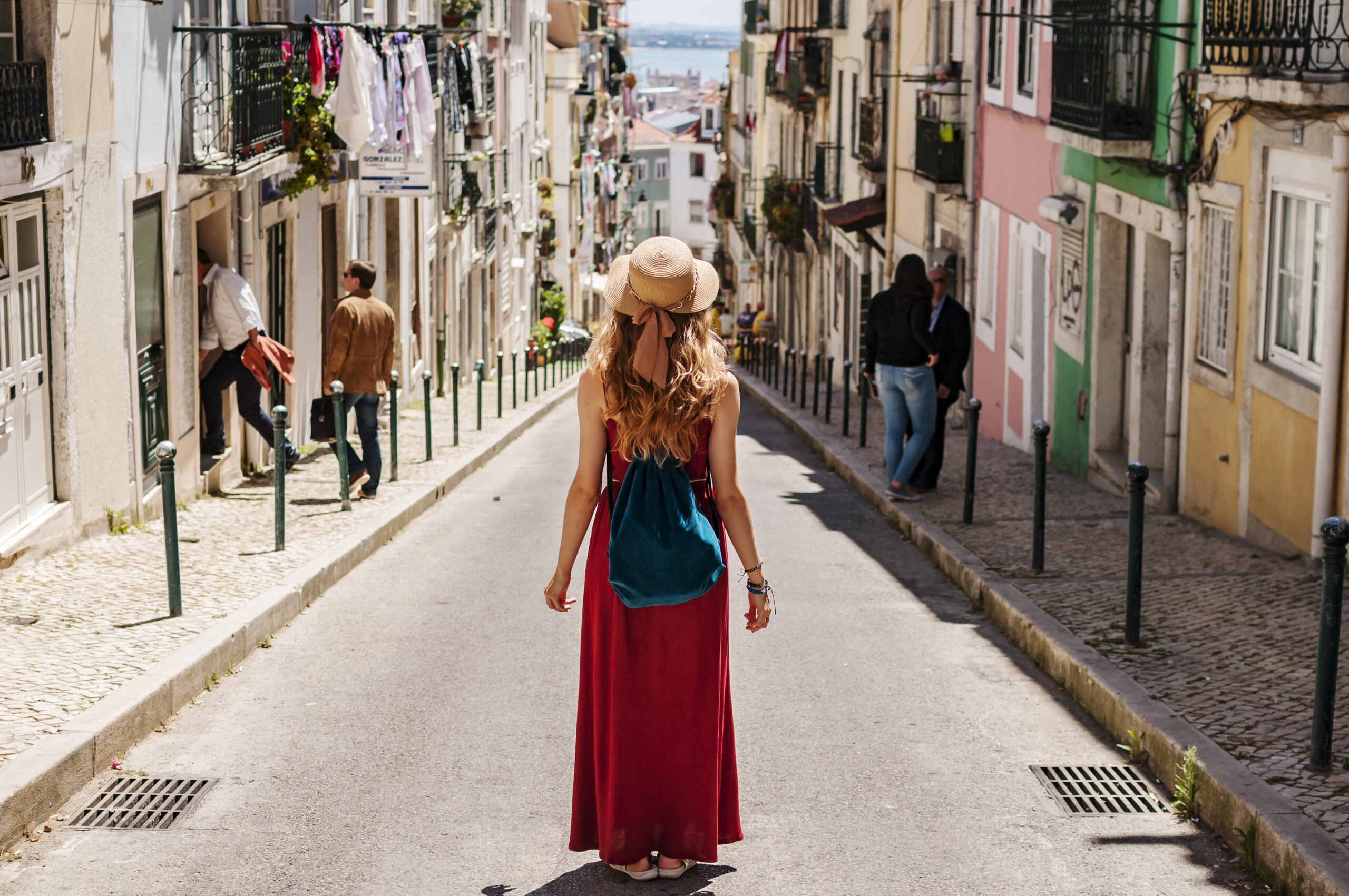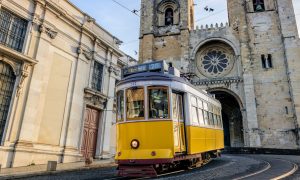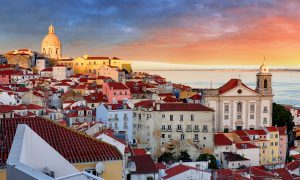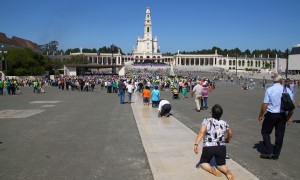Unveiling Lisbon 2024: An Insider’s Guide to 5 Must-Visit Locations
From its fado-fueled, cobblestone-laden alleys to its panoramic sun-soaked terraces, Lisbon’s breathtaking vistas, rich history, and vibrant culture provide a captivating experience. This article spotlights five hidden gems in Lisbon for the travel-savvy explorers planning their visit in 2024.
1. Alfama, including the Jewish Quarter
Nestled between the São Jorge Castle and the Tejo River, the Alfama District is the oldest neighborhood in Lisbon. It’s akin to stepping back into time, with labyrinthine streets veiled in history. Picture long-forgotten alleyways, flanked by old houses adorned with tiles of yesteryears; the aroma of simmering pots from small taverns entices your senses, while the haunting melodies of fado, Portugal’s soulful traditional music, infiltrate your soul.
The Alfama District beholds a significant part of Lisbon’s past, including the Jewish Quarter. The first Jews in Portugal date as far back as Roman times, but it was in the 15th century that the Jewish community, known as ‘Alfama Pequena’ thrived. Now referred to as the ‘Vila Moura,’ the Jewish Quarter offers an immersive slice of history, featuring landmarks like the old synagogue turned church, the Nossa Senhora do Triunfo.
When in Alfama, do not miss the beautiful Miradouro das Portas do Sol, a fantastic viewpoint providing a panoramic vista of the district and the river.
2. Miradouro Sao Pedro Alcantara (Viewpoint)
Next on our curated list is Miradouro Sao Pedro Alcantara, undoubtedly one of the city’s most iconic viewpoints. Located in the opulent Principe Real neighborhood, this expansive terrace provides awe-inspiring views of the cityscape, including the Castelo São Jorge, the Mouraria district, and the historical Alfama maze.
The beautifully manicured garden, embellished with mythological statues and tiled murals depicting city landscapes, adds to the charm of this lookout. As you sip a cup of Portuguese coffee from the terrace café, you become part of the mesmerizing union of ethereal sunsets and the city’s twinkling nightlights.
3. Sao Roque Church (Igreja Sao Roque)
Carved into the landscape of Bairro Alto, yet another historical district in Lisbon, stands the São Roque Church, a monument representing the zenith of Jesuit architecture. Built in the 16th century, the church juxtaposes modesty and grandeur. To the unassuming eye, its plain façade is easily overlooked; yet, step inside, and you are greeted with one of the world’s most elaborately ornate interiors.
Central to the design is the individual chapels, each a testament to the opulent Baroque influence. The Chapel of St. John the Baptist, with its intricate micro-mosaic panels and precious stones, is a sight to behold, a true embodiment of Lisbon’s history and wealth.
4. Carmo Convent Ruins
Just a stone’s throw away from São Roque Church, lies the Carmo Convent Ruins. The skeletal remains of the convent, the Gothic arches reaching out to the sky, serve as a stark reminder of the 1755 earthquake that literally shook Lisbon’s foundations.
This destroyed church, now converted into the Carmo Archaeological Museum, offers an eerie yet beautiful spectacle. The open-air ruins, home to a trove of archaeological finds from different epochs, discern their tales under Lisbon’s vast blue skies.
The items on display range from mummies and ancient sarcophagi to Moorish tiles and Visigoth artefacts. The church ruins perch atop the hilly terrain of the Santa Justa Elevador, where you stand overlooking the Rossio Square, further down the bustling cityscape.
5. Museu do Dinheiro (Money Museum) and its underground excavations
Lastly, while modern Lisbon engrosses, a journey into its ancient layers awaits at the Money Museum. Housed in the historical building of the former Church of São Julião, the Money Museum, or ‘Museu do Dinheiro,’ provides an interactive journey through the history of money and its role in society.
Below, the museum’s gaze extends beyond the confines of coinage into the archaeological depths. The basement hosts excavated Roman and Moorish ruins from the 1st to 3rd centuries AD, offering an intriguing aspect to the museum’s narrative. You can explore the foundational remains of the city walls, fish salting facilities, and even a section of the Roman road, a visible testament to Lisbon’s historical trajectory.
Conclusion
Lisbon, beyond the guidebooks and the glossy panoramas, is a mélange of modern escapades interspersed with historical nooks. Visit Alfama, gaze at the cityscape from Sao Pedro De Alcantara, immerse yourself in the Sao Roque Church’s richness, wander amongst the Carmo Convent ruins, or delve deep into Portugal’s intriguing past at the Museu do Dinheiro. Every vista, every corner, and every brick here fosters a tale waiting to be discovered. Venture beyond the well-traveled paths, and this city’s heart and soul, the genuine Lisboa, beckons you in 2024!

Gonzalo
Founder/Owner of The Lisbon Guide, one of the major blog references in Portugal, established in 2014 and receiving every year 250.000 visitors from all over the world, looking to provide the best experiences in Portugal. In partnership with Portugal Magik for all private tours and transfers across Portugal, Gonzalo loves a good seafood meal at Monte Mar Cascais, and all from Michelin Chef Avillez. Favorite Hotel in Lisbon/Portugal, Penha Longa Resort by Ritz Carlton.
For over 15 years, Gonzalo have been helping thousands of travelers yearly to plan a perfect trip to Portugal. Based in Lisbon/Cascais and working in this field for over 20 years, with multiple ongoing projects. Also an avid TripAdvisor user level 6 with more than 300.000 readers worldwide.
Many years working also as a Private Guide of Lisbon, Sintra, Fatima, Porto, Douro Valley, Evora, and other locations in Portugal.



![[MUST READ] Lisbon Best ViewPoints Revealed [MUST READ] Lisbon Best ViewPoints Revealed](https://lisbonguide.org/wp-content/plugins/contextual-related-posts/default.png)














































